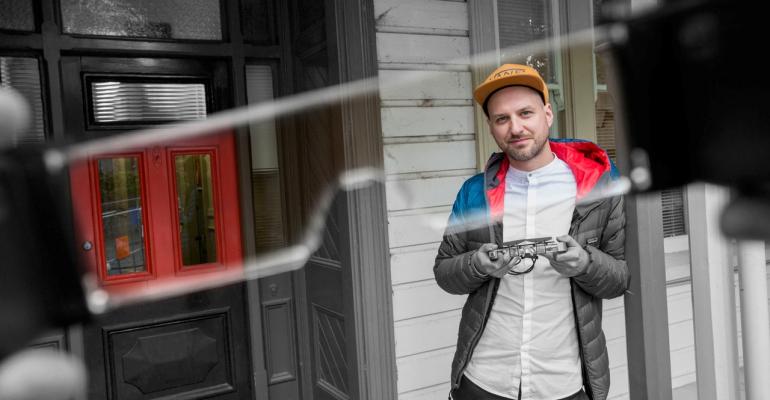
Dr Tobias Langlotz
Seeing colours
A field of poppies in full blossom would look very different if you were colour blind – and being unable to detect red from green could also affect your career opportunities.
Perceiving colours is something we often take for granted. However, many people are affected by Colour Vision Deficiency.
Dr Tobias Langlotz is leading a team at the University of Otago who have been funded by the Science for Technological Innovation (SfTI) National Science Challenge to explore an idea for helping people with colour-blindness and perhaps other visual impairments.
Tobias and his team, Jonathan Sutton and Holger Regenbrecht have successfully developed glasses using technologies from head-mounted displays that support people affected by colour vision deficiency.
“It’s really important that people can distinguish between colours more clearly,” Tobias says.
“We call our approach ‘Computational Glasses’. It is basically a pair of glasses that have small cameras attached, and the cameras see what the wearer sees. Then there’s a tiny computer attached that recognises everything that’s a particular colour, such as red, and enhances that using tiny displays integrated into the glasses. With people who can’t tell the difference between red and green, we add blue to the red, and suddenly things start popping out into people’s vision.”
“...a bit like having a robot on your face.”
“They’re bulky, heavy and battery lifetime it still a challenge if you’re wearing them around all day”.
“We’ve shown that this kind of technology can be an effective solution, and now we need the industry expertise in miniaturisation and improving battery life to bring us closer to the goal of making them successfully wearable.”
Tobias’ work is well respected — he and the team won a prize for being in the top 5 percent of all papers at last years’ prestigious ACM CHI Conference on Human Factors in Computing Systems in Montreal.
The next phase is to explore the feasibility of using the glasses for other visual impairments that are hard to correct with traditional glasses.
“One specific thing we are looking at the moment is how to make a more natural compensation of colours that looks more coherent than, say, a blue poppy.”.
One of their most recent prototypes for glasses filters light in real time at the pixel level.
“Think of hundreds of filters that let particular frequencies of the light spectrum through to control the colours the eye sees through the glasses. That’s not just for colour vision impairment, but any impairment in which increased contrast could help the viewer see more clearly.”
The new work is a collaboration with partners from Tokyo Institute of Technology.
Look out Star Trek’s Geordi La Forge!
Images and video courtesy University of Otago.